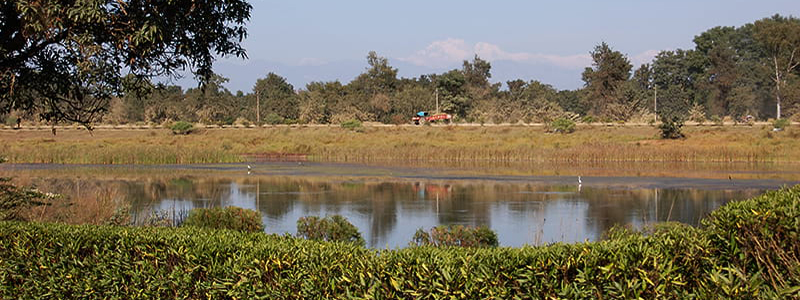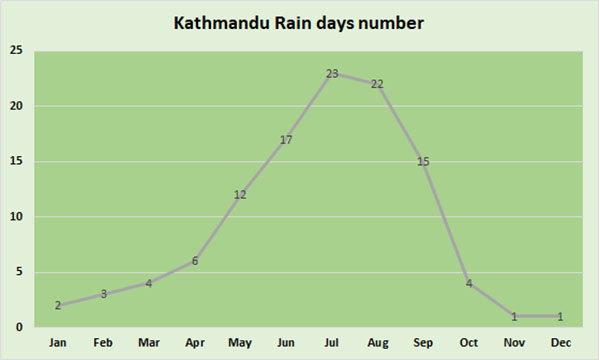
Nepal Heritage and Adventure tours

Nepal Heritage and Adventure tours
Climate of Nepal has seasons:
Summer(May-August): is the hottest season of Nepal. Hot and dry days are more comfortable than that of Monsoon which is hot and humid.
Monsoon(June-September): Most of the rainfalls in Nepal are due to Monsoon in summer. The rest are dry days. Spring and Autumn are in between seasons. The months of seasons also vary with altitude and slope of the mountain. Northern slopes are less warm than that of southern slopes at similar altitude. The rainy season depends on monsoon activities. The length of summer and autumn also depend on the Monsoon. Most of the northern belt of the Trans-Himalayan zone is monsoon-shadowed and ideal for trekking. The climate of Kathmandu valley can be taken as a standard.

Autumn(September-November): begins with the end of Monsoon and ends with the beginning of winter in November. Autumn is also a harvesting and festival season. You can enjoy lots of green and blue sky. Best season for outdoor trip activities like trekking, rafting, jungle safari, etc. You will be seeing happy people merry around, and visiting relatives and friends.
Winter(November-February): days are also dry days with a few rains. Typical day in Kathmandu valley in the winter is as warm as 20 degree Celsius in sunny days but night temperature falls below freezing. The little rains in winter are due to Mediterranean activities. Hence the winter rainfall in western Nepal has more rain than those of eastern Nepal.
Spring(February-April): Spring has occasional showers and rains. The days are mild days with the new vegetation. The sky is not as blue as Autumn.
It is a little hazy if there are no showers for a long period.
Today's Kathmandu weather.
